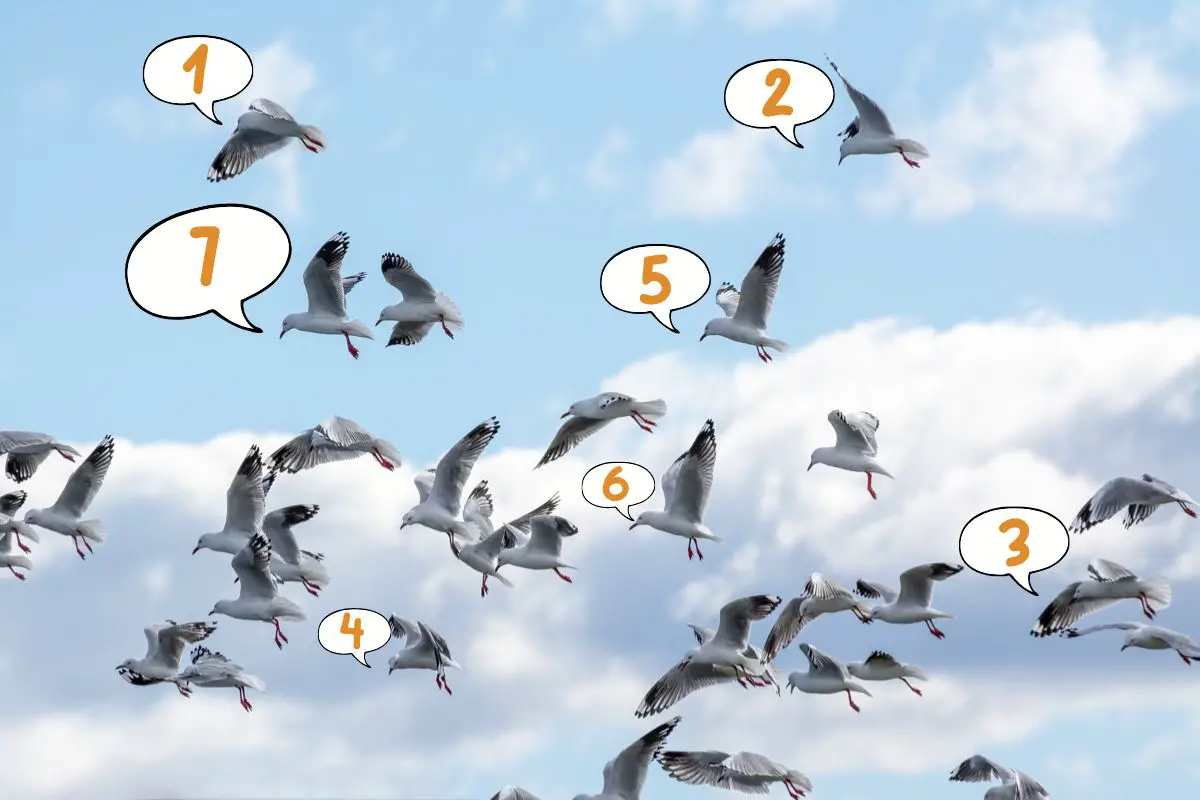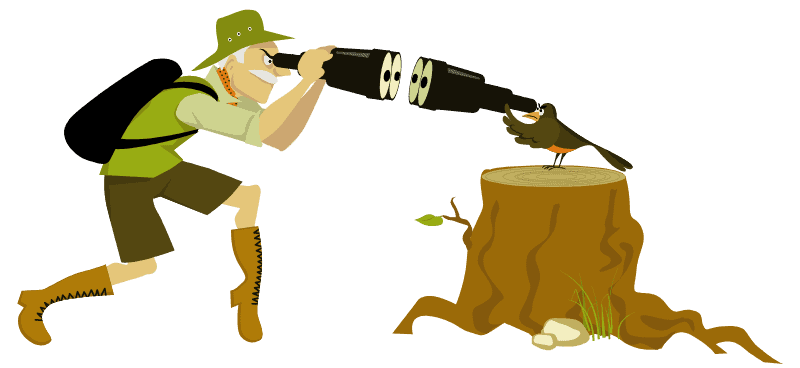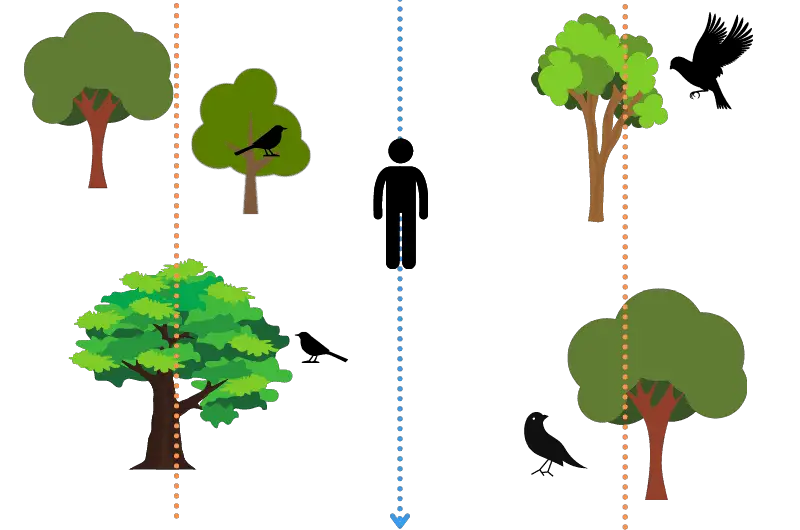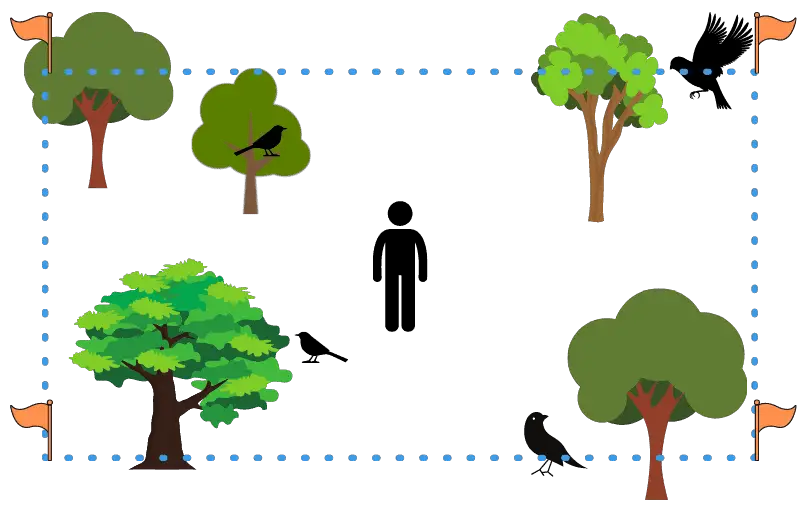This seems like a really basic question but there are actually some very interesting techniques involved in counting birds. Backyard bird watchers will count birds a bit differently from an ornithologist conducting a bird survey. Let’s explore some ways in which bird watchers count birds.
Bird watchers count birds in various ways. Individual counts are done when just a few birds are present; counting in groups of 5, 10, 20, or more is used for large flocks; grid counting is used for large flocks also. Many more methods are used. Numbers are recorded in a phone app or on paper.
Counting birds effectively takes time and practice. Read on to find out more about how bird counting is done in both backyard and scientific settings.
Counting Birds For A Bird Watch

A lot of recreational bird watchers will take part in a Backyard Birdwatch such as the Aussie Backyard Bird Count or the Great Back Yard Bird Count. Bird counts such as these are a great way to get information about bird numbers all over the world. This helps to understand species numbers and environmental effects that might be impacting them.
As most people who take part in backyard birdwatches may be novices, they will mainly count individual birds. It is not likely that large flocks of birds will be seen in most backyards, so group counting or grid counting techniques are not necessary.
Learn how to birdwatch from home in this article on my blog.
Aussie Backyard Bird Count
For the Aussie Backyard Bird Count, people are asked to stand or sit in one spot for 20 minutes at a time and record any birds they see. People submit their count via an online form or using the Aussie Bird Count app available for iPhone or Android.
The Aussie Bird Count app has a Find a Bird section where you can identify a bird by searching for size, shape, and color. People can take part in this bird count from October 18-24 in 2021.
Great Back Yard Bird Count

The Great Back Yard Bird Count is a worldwide event where bird watchers are asked to spend time in their favorite places counting as many birds as they can for 4 days. This event takes place in February each year. In 2022 you can join in this global bird count from the 18th to the 21st.
Participants in this count are asked to pick a place to watch birds and then spend 15 minutes or more at least once over the four days, counting as many birds as they can see or hear. Results can be recorded in the Merlin Bird ID app, the eBird Mobile app, or online via the eBird website.
Learn how to spot birds when birdwatching with these great tips.
Bird Survey Methods Used By Ornithologists
The techniques used by Ornithologists to count birds are a bit more thorough than those of a backyard bird watcher. It is necessary to collect more accurate data and as a result, a bird count is more structured or planned.

There are different metrics involved in an avian survey to record bird numbers:
- Total abundance – a count of all individual birds in a certain area
- Density – the number per standard area
- Relative Abundance – Comparative commonness or rarity among places or times (are there more birds here or there at different places and times)
- Distribution – patterns of abundance through space or time
The methods used for counting are:
- Point counts
- Line/Strip Transects
- Area Searches
- Coastal Surveys
The Point Count
With this method, the observer stays stationary and counts all the birds they can detect around them by either sight or sound.
There are different types of point counts, the most common is a Fixed Radius Point Count. For this method, the bird watcher decides on the radius of a circular area in which they will count for a fixed amount of time. This might be an area 50 to 100 meters or more from the observer depending on visibility.

Another point count method used is the Variable Radius Point Count. This is where the watcher will count any bird they detect at any distance and then estimate how far away it might be.
To count larger areas using point counts, ornithologists will use multiple different points spread out across the area. Generally, a distance between each point of greater than 150m is ideal. This is to ensure that the same birds are not being counted more than once and also that it does not take too long to get between each point. Numbers from each point would then be added together to get an estimate of the birds in that larger area.
Learn why people watch birds in the first place in this article.
Line/Strip Transect
With this method, the observer walks slowly and consistently along a line recording all the birds seen or heard on either side of them at a certain distance. This is done over a certain time frame and the length and width of the transect is a set distance.
This type of counting method enables the person to cover a lot more ground and see more habitat than when doing a standing point survey.

Area Search
With an area search survey, the bird watcher walks around freely in a set area to count birds. This is still done over a predetermined time period but the person is free to walk around anywhere within the allotted area.
The survey area will be marked out by flags or other markers to ensure the bird counter knows the boundaries of the search area.
This method is good for beginners as they can go wherever inside the area they like in order to get visual confirmation of a bird.

Coastal Surveys
As the name suggests, a coastal survey is done near the ocean, looking for offshore birds flying over or floating on the water as well as birds on the shore. For this type of count, binoculars or a spotting scope are used to spot birds that may be far from shore.
As with the other methods, a coastal survey is done in a predefined area and for a specific amount of time.

Why Count Birds?
If you are not a bird lover, you may be wondering why anyone would want to count birds in the first place. I mentioned a couple of reasons earlier on in this article but let’s explore some more.
Some reasons why bird counts are important are:
- to find out where certain species occur
- in order to learn what types of birds are in a certain area
- to gain ideas about the populations of certain species
- to assess whether bird numbers have changed in any area over a period of time
- to study how birds use the landscape
- to asses environmental impacts on bird numbers
- to assess human impacts on bird numbers
Summary
You can now see that bird counting is not as simple as you may originally have thought. Keeping track of bird numbers is extremely important, not just to keep an eye on the birds themselves but also to study the health of the environment they, and us, call home.
If you have a chance to join in a bird count in your local area, don’t hesitate. There are many more than just the two I mention here in this post. We can all do our part to ensure that our beautiful birds are happy, healthy, and thriving.
References
- How To Count FAQ – Birdlife Australia
- How To Participate (Great Back Yard Bird Count) – birdcount.org
- Avian Count Surveys – Gerick Bergsma
